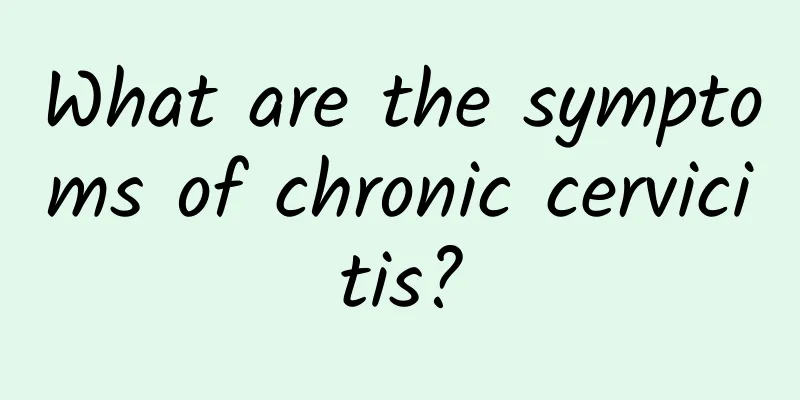What are the treatments for vulvar leukoplakia?

|
What are the treatments for vulvar leukoplakia? When it comes to gynecological diseases such as vulvar leukoplakia, many people may be unfamiliar with it. It is a chronic vulvar malnutrition disease, mainly manifested as vulvar itching, pain, local or diffuse vulvar skin and mucous membrane decolorization, whitening, etc., which has a great impact on female patients. So, what are the treatments for vulvar leukoplakia? 1. Surgical treatment: Although surgery is the main treatment for many diseases, it is not the first choice for the treatment of vulvar leukoplakia, because surgery can cause contracture and deformation of vulvar leukoplakia, seriously affecting the patient's physical and mental health and sexual life, and there is a possibility of recurrence after another surgery. When there is already malignant transformation or the possibility of malignant transformation, and it is atypical hyperplasia, surgical treatment should be considered. The two most commonly used methods are simple vulvectomy and vulvectomy with skin grafting. 2. Local freezing: Cryotherapy needs to be performed under anesthesia to reduce the patient's pain and burning sensation. It may cause pain and burning sensation to the patient. After freezing, the local surface will be red and swollen, which will gradually subside after 1 hour. Blisters may occur on the second day, and scabs will fall off in 6 to 7 days. The effect is good in a short time after treatment, but it is also easy to relapse. 3. Bohm infrared: Generally, 12-14W irradiation power, 10cm irradiation distance, vertical irradiation angle, 15-20 minutes of irradiation treatment are used. Different auxiliary treatments can be used before and after infrared irradiation, such as local application of mometasone furoate before light irradiation, and 1% hydrocortisone after the patient's itching improves. After 1-3 courses of light irradiation, the itching is significantly reduced or disappears, and the depigmentation of the vulvar skin and mucosa can gradually return to normal. 4. Electrocautery: mainly using medical computer high-frequency electrocautery to cut the lesion tissue under local anesthesia, the electrocautery power is 60-70W, and the local electrocautery is performed until the skin turns pink and there is no hard tissue feeling. Anti-inflammatory treatment is required after surgery, and this method is rarely used now. Warm reminder: Vulvar leukoplakia is difficult to treat and has a high recurrence rate. When female patients experience discomfort, they should go to the hospital to check whether they have vulvar leukoplakia. In addition, it is also important to do a good job of daily prevention. Daily diet and living habits as well as genital cleaning are the key to preventing vulvar leukoplakia. |
<<: What should you pay attention to when you have bacterial vaginosis?
>>: Introduction to uterine cysts
Recommend
How much does painless abortion surgery cost?
The cost of painless abortion surgery usually ran...
Poor cardiopulmonary function may increase the risk of dementia! AI fitness magic mirror detection tool, 4 ways to strengthen the heart and lungs to improve cardiopulmonary endurance
Young people are not necessarily physically stron...
Women should pay attention to the symptoms of vaginitis as early as possible
The occurrence of vaginitis has disrupted the liv...
The best treatment for cervicitis
Cervicitis is the most common gynecological disea...
The most common hazards of chronic pelvic inflammatory disease
Among the many types of pelvic inflammatory disea...
What are the dangers of ovarian cyst rupture?
What are the dangers of ovarian cyst rupture? Is ...
Magnesium deficiency can cause dysmenorrhea
Numerous studies have shown that dysmenorrhea is ...
Which hospital is good for abortion?
Nowadays, many women who get pregnant unexpectedl...
Are cervical erosion and polyps the same thing? Are they contagious?
Cervical erosion and polyps are not the same prob...
Experts explain the causes of irregular menstruation
Irregular menstruation is a gynecological disease...
What medicine can I take to recover from uterine fibroids? What medicine can I take to recover from uterine fibroids quickly?
Uterine fibroids are common benign tumors in gyne...
How to judge whether uterine fibroids are malignant? What should I do if I have uterine fibroids?
Uterine fibroids are one of the most common benig...
Thin people with metabolic syndrome may also be affected! Nutritionist reveals: Don’t step on these three dietary landmines
Many people think that only obese people will hav...
What to do if you have irregular menstruation? Here are 4 exercise methods to help you with irregular menstruation
Many women have irregular menstruation, which is ...
How to treat severe adnexitis?
How to treat severe adnexitis? Severe adnexitis s...









